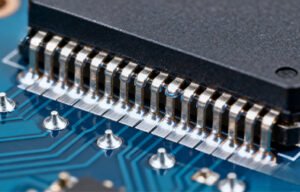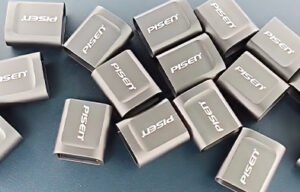Why Laser Welding Is Ideal for Precision Medical Device Manufacturing
Introduction
The medical industry demands precision, reliability, and safety. These standards are particularly crucial when it comes to assembling medical devices, where even the slightest defect can compromise patient safety. Among the many joining technologies available, laser welding has become the leading choice for precision medical device manufacturing due to its high accuracy, minimal thermal impact, and biocompatible outcomes.
Why Precision Matters in Medical Device Manufacturing
Medical devices are often small, intricate, and made from biocompatible materials like titanium, stainless steel, or polymers. A single misalignment or material inconsistency can lead to device failure or rejection during regulatory testing. Therefore, manufacturers require a welding method that offers micron-level precision and repeatability — something that laser welding delivers consistently.
Common Welding Challenges in the Medical Industry
Manufacturing challenges in the medical device industry include:
Heat distortion
Material contamination
Inconsistency in weld quality
Incompatibility with miniaturized components
Traditional welding techniques like TIG or resistance welding often struggle to meet the stringent requirements of medical-grade components. Laser welding offers a non-contact, clean, and accurate solution that minimizes these challenges.
What Is Laser Welding?
Laser welding is a process that uses a concentrated laser beam to melt and join metal or plastic parts. It is particularly effective in high-precision applications due to its:
Minimal heat-affected zone (HAZ)
High-speed processing
Narrow, deep penetration
This makes it perfect for thin-walled components, micro assemblies, and temperature-sensitive materials.
Benefits of Laser Welding for Medical Devices
Here are the top reasons why laser welding is preferred for medical device manufacturing:
High Precision: Accurate control over beam diameter and energy ensures consistent welds.
Minimal Distortion: The localized heat application preserves the integrity of surrounding components.
Non-Contact Process: Ideal for delicate parts, especially in catheter and stent manufacturing.
High Repeatability: Ensures each product meets quality standards across mass production.
Biocompatible Joints: The purity of laser welds supports clean and safe implantation.
Low Maintenance and Cleanroom Friendly: Requires less physical handling and is ideal for sterile production environments.
Key Medical Components Using Laser Welding
Laser welding is used in a wide range of medical devices and instruments, including:
Surgical tools
Pacemaker casings
Catheters and guidewires
Needles and cannulas
Orthopedic implants
Stents and valves
Endoscopic instruments
Each of these components requires different welding geometries and materials, all of which laser welding can adapt to with great flexibility.
Fiber Laser Welding vs Traditional Welding Methods
Compared to resistance welding or TIG welding, fiber laser welding offers:
| Feature | Traditional Welding | Fiber Laser Welding |
|---|---|---|
| Heat Affected Zone | Large | Minimal |
| Speed | Moderate | High |
| Automation Ready | Limited | Excellent |
| Weld Precision | Moderate | High |
| Cleanroom Use | Difficult | Suitable |
| Material Flexibility | Limited | Broad range |
Fiber lasers are particularly favored for medical applications due to their low power consumption, high efficiency, and tight beam control.
Biocompatibility and Laser Welding
Medical devices must be biocompatible, meaning they do not cause any adverse reactions when used inside the human body. Laser welding produces clean welds without the use of filler materials or fluxes, which helps prevent contamination and supports biocompatibility. This is crucial for implants and surgical tools.
Cleanroom Compatibility and Automation
Laser welding systems are easily integrated into cleanroom environments — a common requirement in medical device production. Their enclosed, automated setups reduce human intervention and the risk of contamination. Robotic arms and CNC controllers can further improve consistency and throughput.
Regulatory Compliance and Safety
Laser welding aids in achieving global regulatory standards, such as:
FDA regulations in the U.S.
CE marking in Europe
ISO 13485 quality system compliance
Because the process minimizes defects and supports full traceability, it’s easier to maintain documentation and meet validation requirements during audits.
Case Studies: Successful Applications in Medical Device Welding
Case Study 1: Laser Welding for Pacemaker Shells
A medical OEM replaced resistance welding with fiber laser welding, improving production speed by 30% and achieving zero defects in 50,000 units.
Case Study 2: Catheter Tip Welding
A global catheter manufacturer adopted automated laser micro welding for their guidewires and catheter tips, significantly enhancing weld consistency and reducing scrap rates.
Choosing the Right Laser Welding System
When selecting a laser welding machine for medical use, consider:
Power and wavelength (e.g., 1064nm for metals)
Beam delivery system (galvo head, fiber delivery, etc.)
Workstation size and enclosure
Precision motion control
Software with traceability and quality control features
For manufacturers, partnering with a provider that offers customized laser welding solutions and after-sales support is essential for long-term success.
Conclusion
As medical devices become more complex and miniaturized, the need for precision and reliability grows. Laser welding is not just a superior joining method — it’s a necessity for today’s medical device manufacturing. With its precision, cleanliness, and adaptability, laser welding ensures manufacturers meet both regulatory and performance standards while staying competitive in a rapidly evolving industry.
111-1024x458.png)


